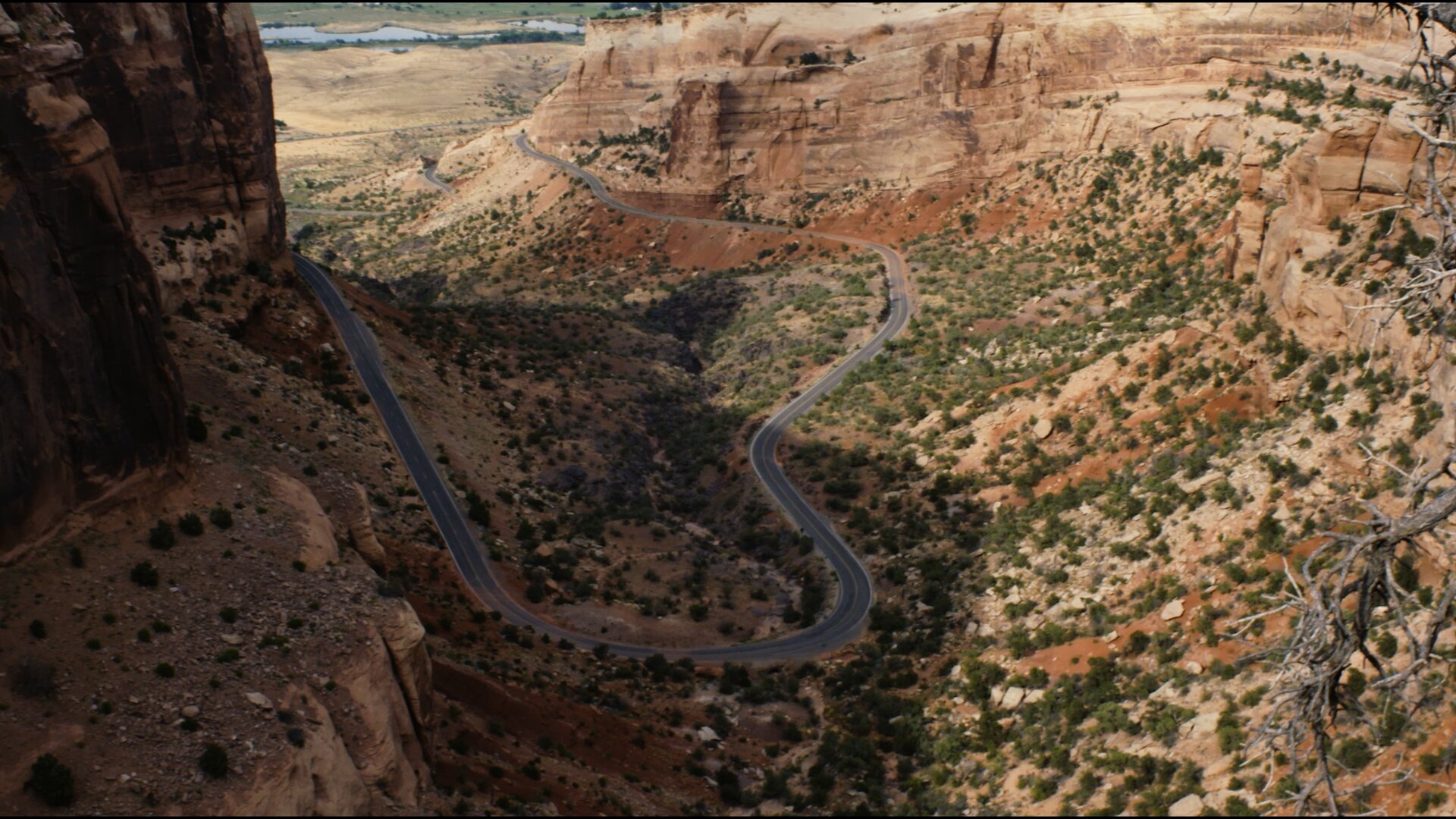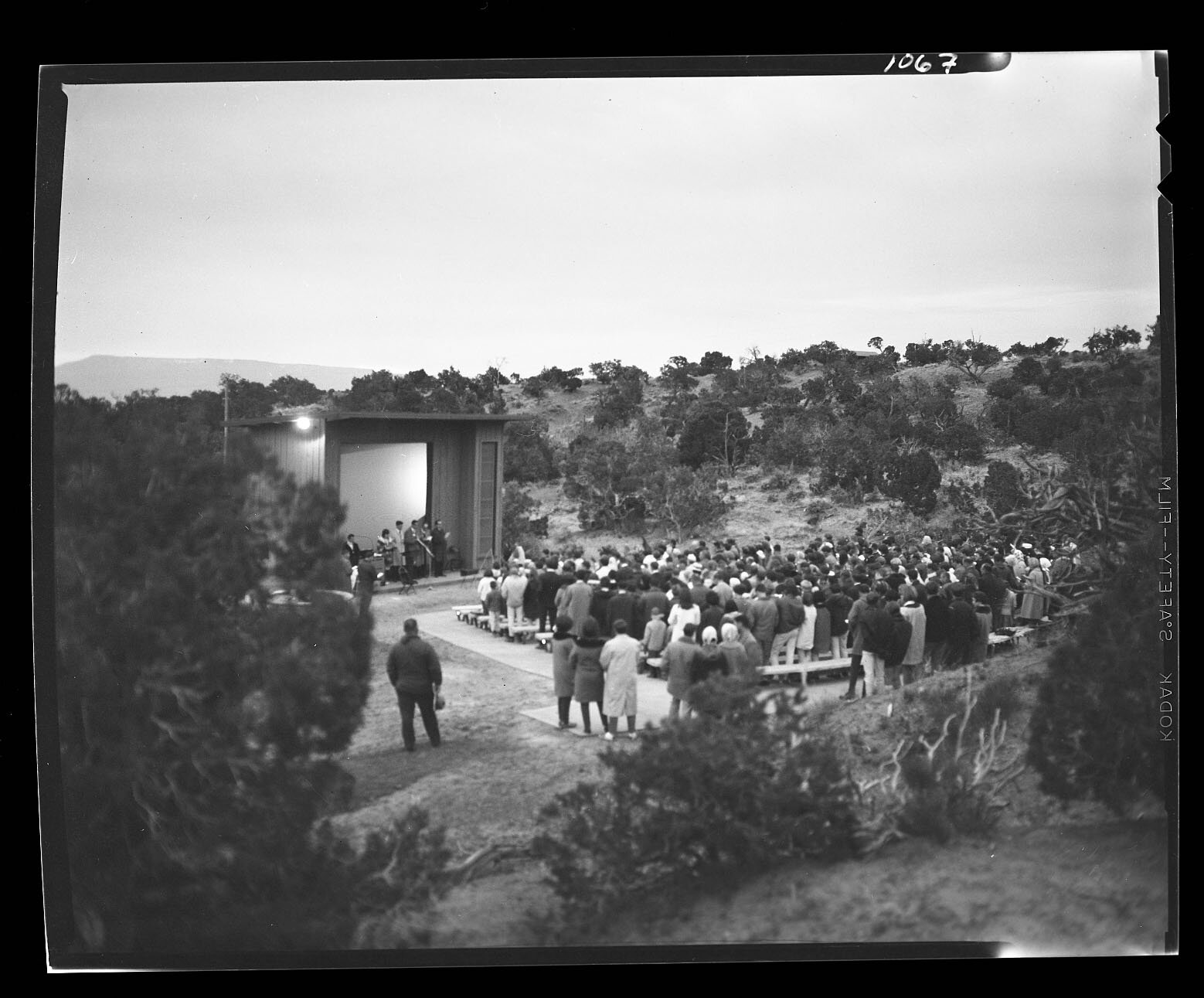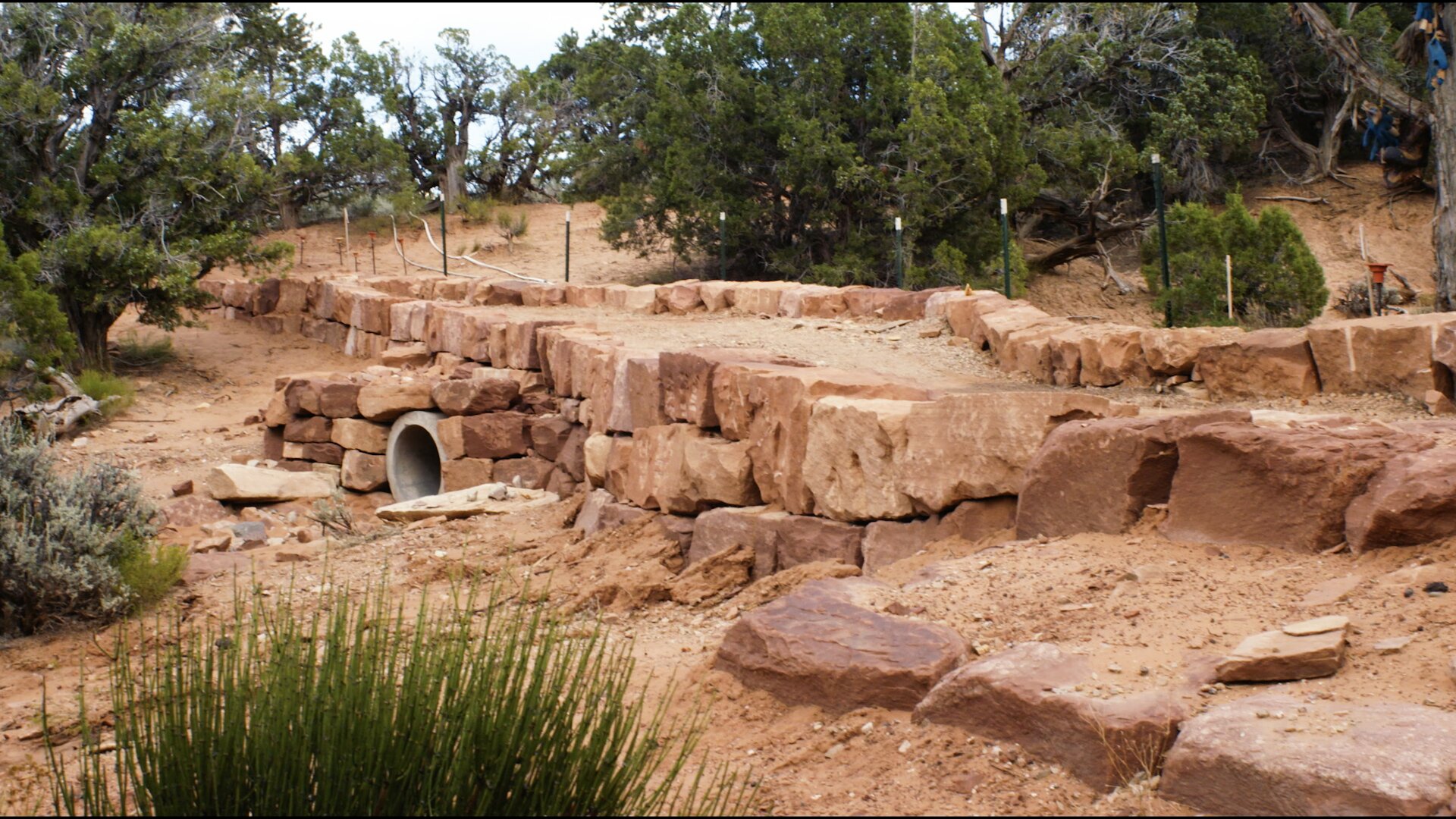Restoring a 'Monumental' stage

GRAND JUNCTION, Colo. — With years of experience in how to move heavy objects, Sean McConville tips over a 200-pound rock, preparing to split it in two.
After drilling a series of small holes, he inserts feathers and wedges: two thin pieces of steel that help a wedge to slide in with each blow of the hammer. With skill and rhythm, he taps each wedge in the row. The pitch of the tap sounds higher as the wedges go deeper.Then, like magic, the stone cleaves in two.
McConville is preparing stones that will make an underutilized attraction in the Colorado National Monument — the 60-year-old amphitheater — more accessible to everyone.
The Colorado National Monument is about 15 miles southwest of Grand Junction. It boasts a landscape of towering spires of sandstone and cliffs formed by erosion, not human hands. President William Howard Taft used the Antiquities Act in the spring of 1911 to designate the area as a National Monument.
Locals of Mesa County refer to it as simply, “the Monument”. A 23-mile-long ribbon of paved road and tunnels runs through the park. The road often flirts with the edges of cliffs girded by stone rock work — thrilling for some, terrifying for others.

Since the construction of Rim Rock Drive by the Civilian Conservation Corps in the 1930s, locals have used the Monument as a place to hike, picnic and soak in the views with visiting friends and family.
From the Monument’s picnic area, visitors can see the entirety of the Grand Valley — Fruita, Grand Junction, Clifton and Palisade.
Many kids growing up in the area have memories of exploring “lemon squeezers,” narrow splits in rock that kids can climb through, if they’re small enough. From the 1980s up until about a year ago, the more curious of these young explorers would happen upon an odd structure tucked away in the juniper trees.
The small building, always locked to the public, was a projection booth surrounded by arcs of wooden seating. Rarely used for its intended purpose of providing a space for interpretive rangers to deliver talks, the amphitheater felt like an abandoned artifact from another time. Which it was.
Mission 66
The amphitheater was built in the early 1960s as part of Mission 66, a 10-year initiative to update facilities managed by the National Park Service.
Many National Parks and monuments were developed before World War II. They were rustic and simple. After the war, car travel boomed across the country. Families looking towards the “swell” economy of the 1950s overloaded the parks. A decision was made to set aside funding to improve and widen roads and create more visitor centers.
The structure at the amphitheater was a clever idea, but it didn’t see much use. The stage was uninspiring and it was difficult to effectively display photos and films like its creators intended. Kevin Dowell, the facilities manager at the Colorado National Monument said, “I'm sure it was cutting edge in its heyday.”

An event at the amphitheater in the 1970s. The projection screen is visible in this photo. Behind the screen was an 8-foot-by 8-foot mirror. Slides were projected onto the mirror and the mirror reflected the images onto the back of the screen. Courtesy: Colorado National Monument Association.
Nevertheless, the design of the projection booth and amphitheater was one that was duplicated at parks around the country.
“In a lot of parks, that technology and design worked really well ... When you do a design that's sort of cookie cutter and you put it in a lot of different places, some places it fits great, some it doesn't,” Dowel said. At the Colorado National Monument, it never fit quite right.
Not meeting its intended purpose, the amphitheater became a low priority for maintenance. The asphalt trail leading up to it fell into disrepair. Local kids used it for cover while playing hide and seek.
A renewed mission
Through an incredible effort of fundraising and awareness campaigning, the Colorado National Monument Association got the ball rolling to rebuild the amphitheater and reconstruct the trails in a more accessible way.
The projection booth and original benches were carefully dismantled with the intent to reuse as many materials as possible.
“There's actually a historic preservation treatment,” explained Dowell. “So we removed all of the old benches with their brackets and the under-the-seat lighting and slightly modified the bench brackets to make them a little bit taller to meet accessibility requirements.”

They saved the wooden planks from the old benches and will refinish them and use them on the new benches.
Conrad Clements is the trails program manager at the Colorado National Monument. Among many other responsibilities, he is in charge of building the trail to the amphitheater. The trail needs to be wide and elevate gradually so that someone who uses a wheelchair can make it to the amphitheater. It's also a historic trail that needs to fit in aesthetically with the rest of the Monument.
That’s where McConville’s expertise in historic construction methods comes into play. He cuts the stone and he and his crew stick the puzzle together so that it looks like it was always a part of the park.

Still under construction, the new amphitheater will feature an actual stage and a swing-down screen for movies, slideshows and presentations.
“We want to make the amphitheater open to everybody in the public. I mean, that's another part of the mission of the National Park Service, in addition to preserving and protecting the resources, is to also provide for the enjoyment of all,” Clements said. “And, for that reason, we want to build this trail so that hopefully, anybody can get out and enjoy the amphitheater.
The project is set to be completed later this year. Hopefully, with a more accessible design, intimate crowds will gather in the space and learn and connect better with this beautiful natural landscape.
Cullen Purser is a multimedia journalist at Rocky Mountain PBS. You can reach him at cullenpurser@rmpbs.org.